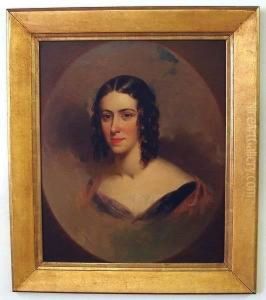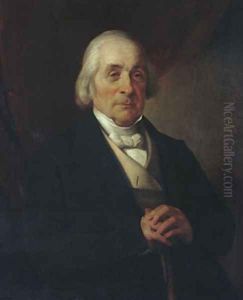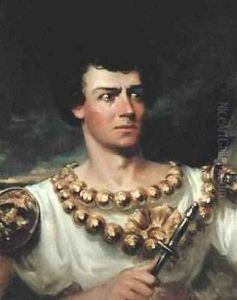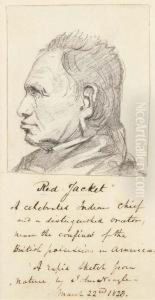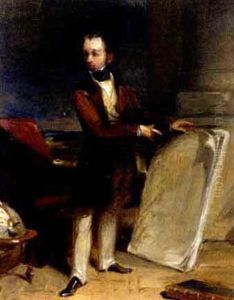John Neagle Paintings
John Neagle was an American painter known primarily for his portraits. Born on November 4, 1796, in Boston, Massachusetts, he spent most of his career in Philadelphia, Pennsylvania. Neagle's life began modestly, as he was orphaned at a young age and raised by his stepmother. His early exposure to art came through an apprenticeship with a coach and sign painter named Thomas Wilson, which he began at the age of 14. Neagle showed promise and ambition in the arts from a young age.
In the early 1820s, Neagle served an apprenticeship with the well-known artist Thomas Sully, who was a leading portraitist in Philadelphia at the time. Under Sully's guidance, Neagle's skills quickly developed, and he began to establish himself as a professional portrait painter. His work was characterized by a strong sense of realism and attention to detail, which made his portraits highly sought after by the social elite of Philadelphia.
One of Neagle's most famous works is the portrait of the American hero and blacksmith Pat Lyon at the Forge, painted in 1826-27. This painting reflects Neagle's interest in depicting working-class individuals with dignity and respect, a somewhat innovative approach at the time. The portrait has been interpreted as a statement on the value of labor and individual rights during the early years of the American Republic.
Throughout his career, Neagle painted numerous prominent figures, including politicians, judges, and wealthy patrons. However, he also maintained an interest in painting the common man and often chose subjects from various walks of life. Neagle's portraits are noted for their expressive faces and the ability to capture the personality of the sitter.
John Neagle's contribution to American art was significant in that he helped establish a uniquely American style of portraiture that differed from the European traditions of the time. His work is seen as an early reflection of American democratic ideals and the emphasis on the individual.
Neagle's career spanned several decades, and his reputation continued to grow throughout his life. He was active in the artistic community, becoming a member of the Pennsylvania Academy of the Fine Arts. Despite facing personal difficulties, including financial struggles later in life, Neagle continued to paint until his death on September 17, 1865. Today, his works are part of the collections of many major museums and are celebrated for their historical significance and artistic merit.



